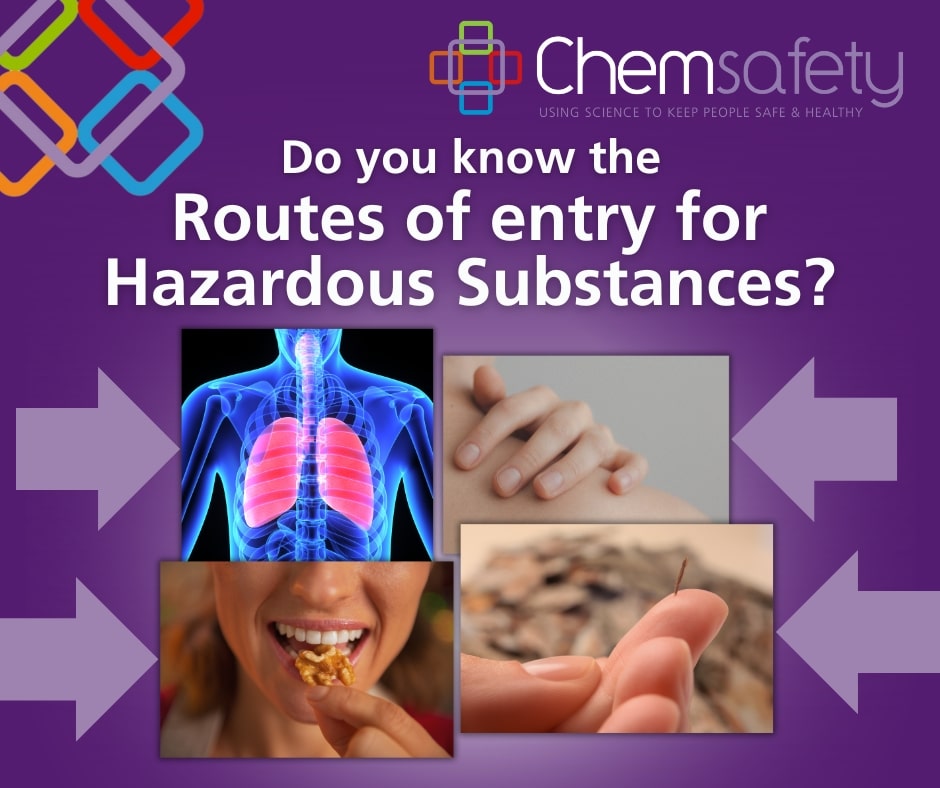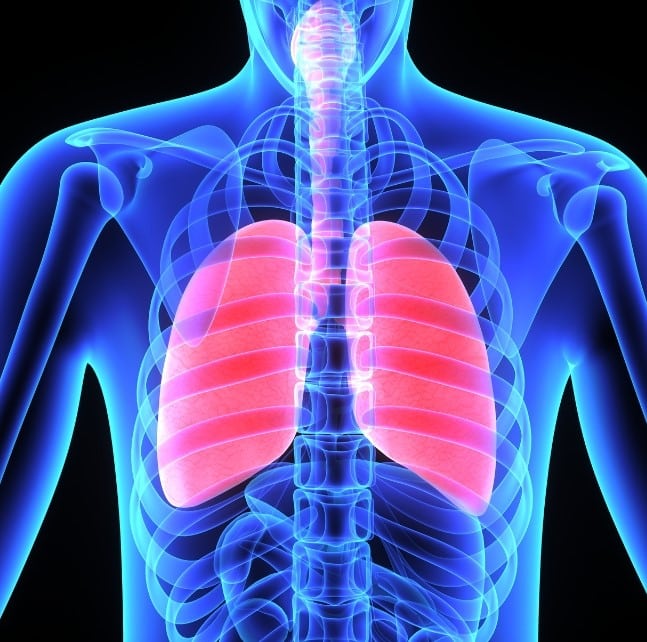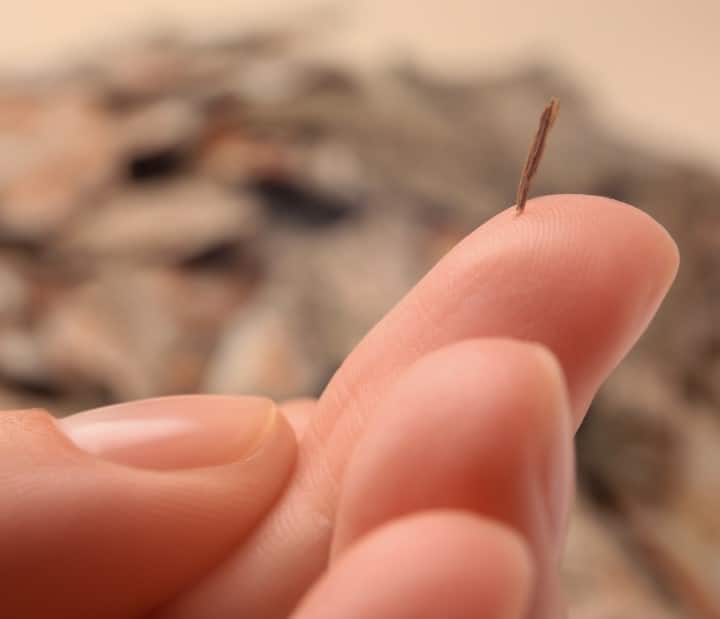
There are four main ways a hazardous substance can enter the body:
- Inhalation (breathing in)
- Dermally (absorbing through the skin)
- Ingestion
- Injection
This piece has been written by Sam McGee, Occupational Hygiene Team Leader and Senior Consultant at Chemsafety with over 10 years of experience in the field.
Inhalation (Breathing In)
This is the most common exposure route we assess during monitoring. If a substance becomes airborne, you’re likely to inhale it. Airborne hazards come in various forms, including:
- Gasses – Carbon monoxide or carbon dioxide.
- Dusts – Flour dust (baking), respirable crystalline silica (cutting concrete).
- Fumes – welding or soldering.
- Vapours – Petrol fumes at the pump, IPA vapors from cleaning.
If your job involves airborne substances, a risk assessment is crucial!


Dermal (Skin Absorption)
Hazardous substances can be absorbed through both intact and damaged skin, often leading to serious health effects. Some common substances that can penetrate the skin include:
- Benzene
- Diesel Fuel
- Mercury
- Methanol
- Nicotine
- 1080
- Toluene
- Xylene
Prolonged exposure—like mechanics wearing diesel-soaked overalls—can make things worse. Unlike inhalation risks, monitoring dermal exposure requires specialized assessment techniques.
Ingestion (swallowing contaminated substances)
While you likely won’t eat hazardous substances directly, contamination happens when hands or equipment aren’t clean during meals. Good hygiene and housekeeping are key to preventing ingestion exposure. In high-risk environments, this might mean showering before breaks, but often, washing your hands properly is enough.


Injection
Injection is the final main route of entry for hazardous substances to the body and is not as common as the other routes. Situations where injections might occur include remediating vacant sites where IV drugs have been used and needles left around, or in construction work getting stabbed by a rusty nail.
Stay Safe! Conducting proper risk assessments and following best practices can help reduce exposure and keep you protected.
Contact us for more information and to discuss how we can help your business and workers.
